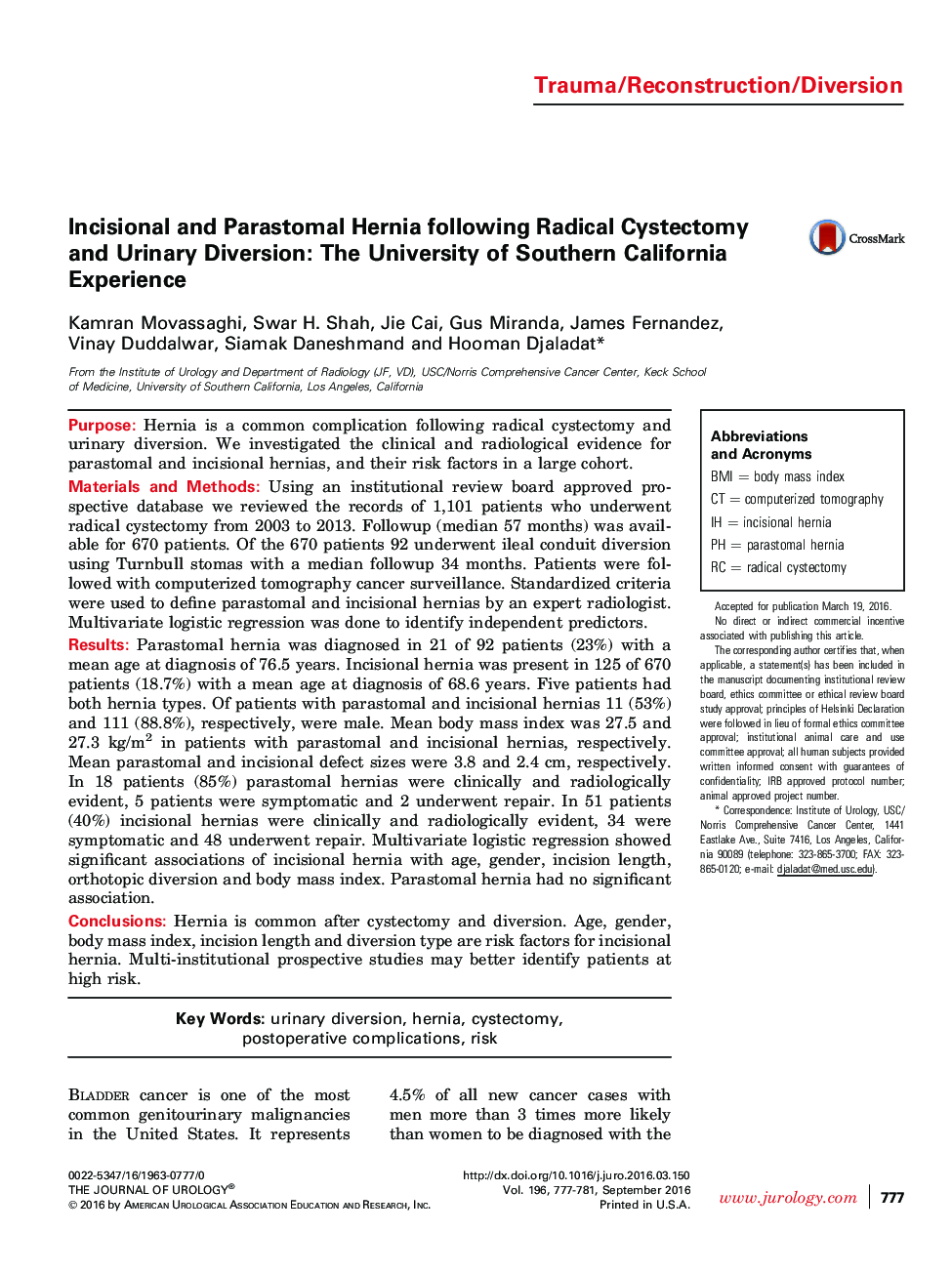| کد مقاله | کد نشریه | سال انتشار | مقاله انگلیسی | نسخه تمام متن |
|---|---|---|---|---|
| 3857861 | 1598872 | 2016 | 5 صفحه PDF | دانلود رایگان |
PurposeHernia is a common complication following radical cystectomy and urinary diversion. We investigated the clinical and radiological evidence for parastomal and incisional hernias, and their risk factors in a large cohort.Materials and MethodsUsing an institutional review board approved prospective database we reviewed the records of 1,101 patients who underwent radical cystectomy from 2003 to 2013. Followup (median 57 months) was available for 670 patients. Of the 670 patients 92 underwent ileal conduit diversion using Turnbull stomas with a median followup 34 months. Patients were followed with computerized tomography cancer surveillance. Standardized criteria were used to define parastomal and incisional hernias by an expert radiologist. Multivariate logistic regression was done to identify independent predictors.ResultsParastomal hernia was diagnosed in 21 of 92 patients (23%) with a mean age at diagnosis of 76.5 years. Incisional hernia was present in 125 of 670 patients (18.7%) with a mean age at diagnosis of 68.6 years. Five patients had both hernia types. Of patients with parastomal and incisional hernias 11 (53%) and 111 (88.8%), respectively, were male. Mean body mass index was 27.5 and 27.3 kg/m2 in patients with parastomal and incisional hernias, respectively. Mean parastomal and incisional defect sizes were 3.8 and 2.4 cm, respectively. In 18 patients (85%) parastomal hernias were clinically and radiologically evident, 5 patients were symptomatic and 2 underwent repair. In 51 patients (40%) incisional hernias were clinically and radiologically evident, 34 were symptomatic and 48 underwent repair. Multivariate logistic regression showed significant associations of incisional hernia with age, gender, incision length, orthotopic diversion and body mass index. Parastomal hernia had no significant association.ConclusionsHernia is common after cystectomy and diversion. Age, gender, body mass index, incision length and diversion type are risk factors for incisional hernia. Multi-institutional prospective studies may better identify patients at high risk.
Journal: The Journal of Urology - Volume 196, Issue 3, September 2016, Pages 777–781
